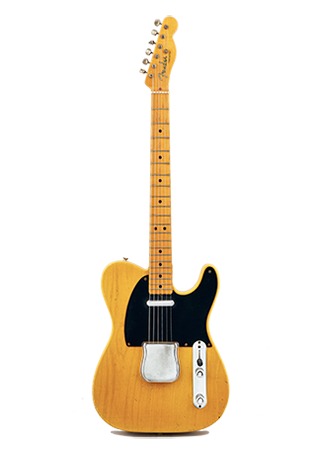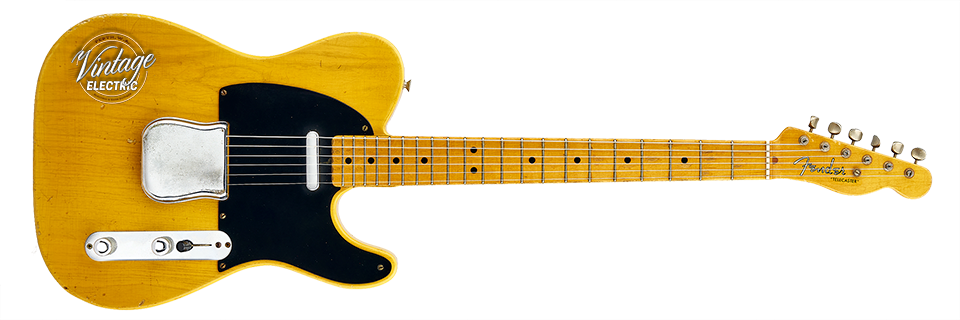The Blackguard Telecaster
The Butterscotch Electric Guitar that changed history
In 1951, a visionary named Leo Fender, a radio repairman with an innovative spirit, introduced two instruments that would forever alter the trajectory of music: the Telecaster electric guitar and the Precision Bass. Little did anyone know that these creations would spark a musical revolution.
Fender’s solid-body electric guitar designs, with their distinct twang and robust construction, quickly resonated with musicians across genres. The Telecaster’s iconic sound became synonymous with rock and roll, while the Precision Bass, with its revolutionary design, freed bassists from the cumbersome upright bass, giving birth to a new era of rhythm and groove. This newfound mobility not only transformed the sound of popular music but also fundamentally changed how bands performed and toured, paving the way for the modern four-piece ensemble we know today.
1. Origins and Design
Making it’s initial appearance in 1949-1950, the Telecaster was previously termed the ‘Broadcaster’. Following the removal of this name after a commercial dispute in February 1951, the Fender company would produce the guitar with no name (‘Nocaster’) before starting production of the ‘Telecaster’ around September 1951.
“For the most part, the majority of late 1951 Telecasters look and feel quite similar to an early Broadcaster or Nocaster, although necks usually are not quite as large and the overall weight of the guitar tends to be much lighter.” *1
Design changes through 1951 included alterations to the knobs, screws, finish composition, and feel with the a more rounded neck.
At 7lbs and 6 oz, this piece is also lighter than the average Broadcaster.
In terms of the determining the production number of Telecasters in 1951, the serial numbers were not sequential.
“In total, according to Richard Smith, Fender produced 1,118 guitars from January to December 1951, of which 250 are single pickup Esquires and 127 are estimated to be Broadcasters, leaving approximately 480 Nocasters and 240 Telecasters.” *2
The body and neck dates provide the manufacture date. This particular guitar has body and neck dates of 29 October and 1 November respectively, hence this piece would most probably exist as one of the first 100 Fender Telecasters ever produced.
Following the successful take-up from guitarists at the time, the Fender Telecaster would rapidly grow in popularity to become the staple instrument of Country and Western music in the United States of America.
2. Music and Artists
Although the Fender Telecaster and Esquire guitars were synonymous with Country and Western music, the guitar found it’s way into blues, pop and rock musical genre’s with great success, most notably with Keith Richards of the Rolling Stones.
The following players would use the Blackguard Telecaster as a major part of their early career:
- Billy Gibbons
- Keith Richards
- Bruce Springsteen
- Jeff Beck
- Vince Gill
- G.E. Smith
- Merle Haggard
- Roy Buchanan
- Danny Gatton
- Nathaniel “Buster” Douglas
3. The 1951 Telecaster
This particular vintage Telecaster is in all original condition and plays well.
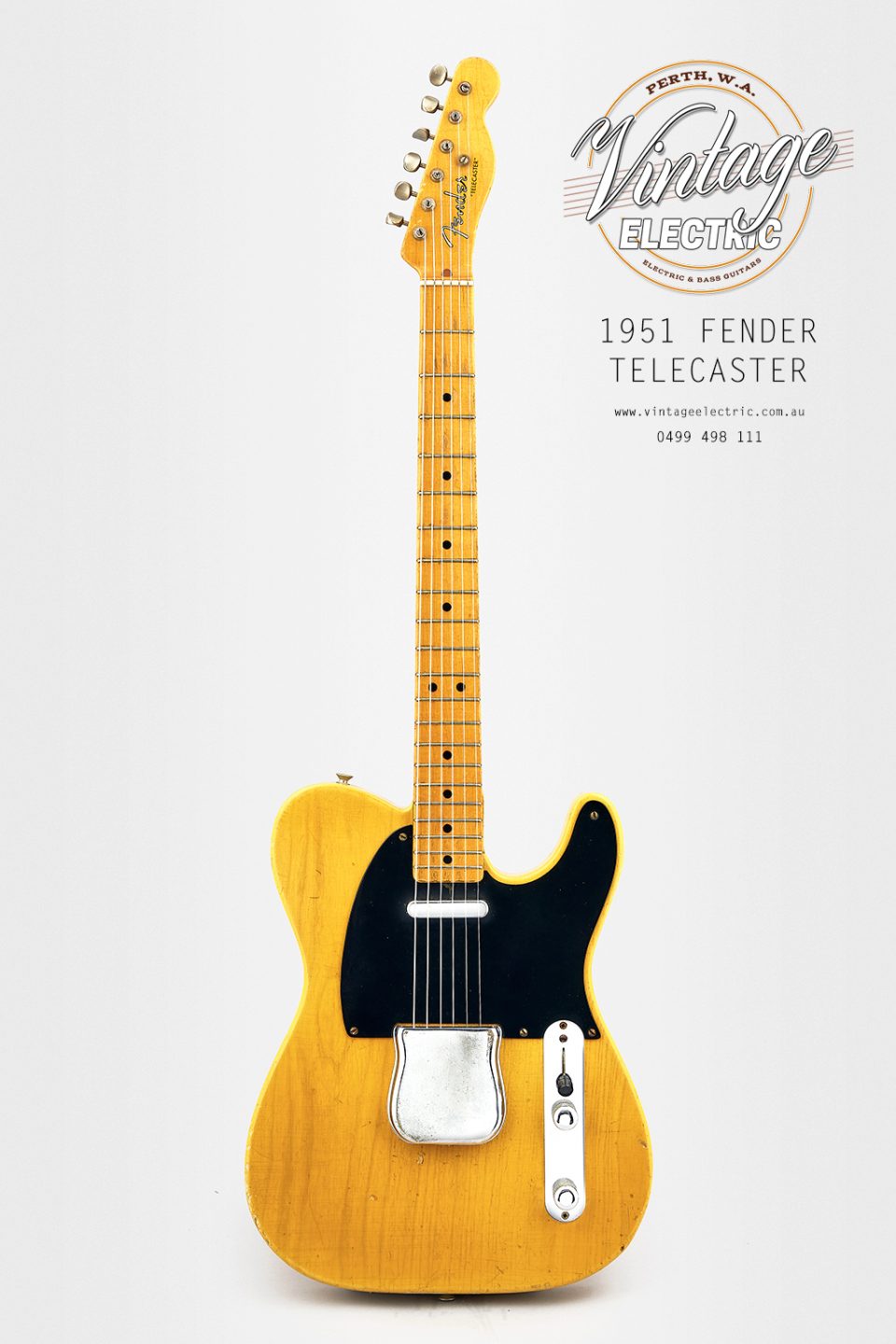
Specifications include a solid ash body, original nitrocellulose butterscotch lacquer finish (finely crackled), original metal components, switches and electronics.
A minor adjustment was made at some point in time with the removal of the dark capacitor on the neck pickup circuit. This was a common modification to make the neck pickup produce a normal level of treble in the mix. In the late 1950’s, the dark circuit was removed from production from all Telecasters.
This 1951 Fender Telecaster has a nice full maple neck, original frets, black dots and original Spaghetti Logo. The single line unlabelled Kluson tuners (“no label”) have never left the guitar.
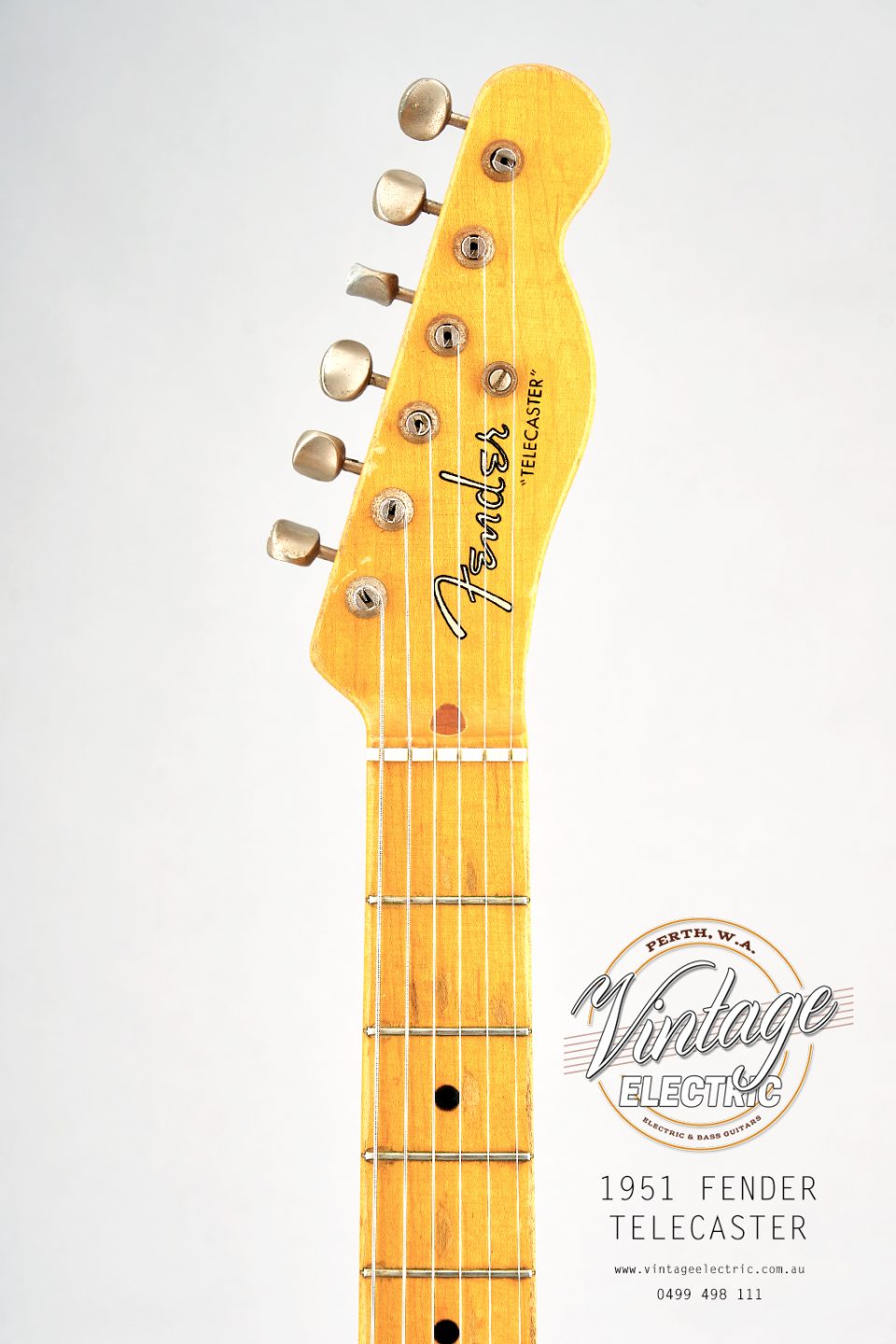
Both pickups are original, untouched and fully operational.
The single ply black guard is in excellent condition and is attached with slotted screws. The guitar arrives with it’s original bridge cover. Despite a vast majority of Telecaster and Stratocaster players removing the bridge cover shortly after purchase, Leo Fender always included one with the sale of his electric and bass guitars.
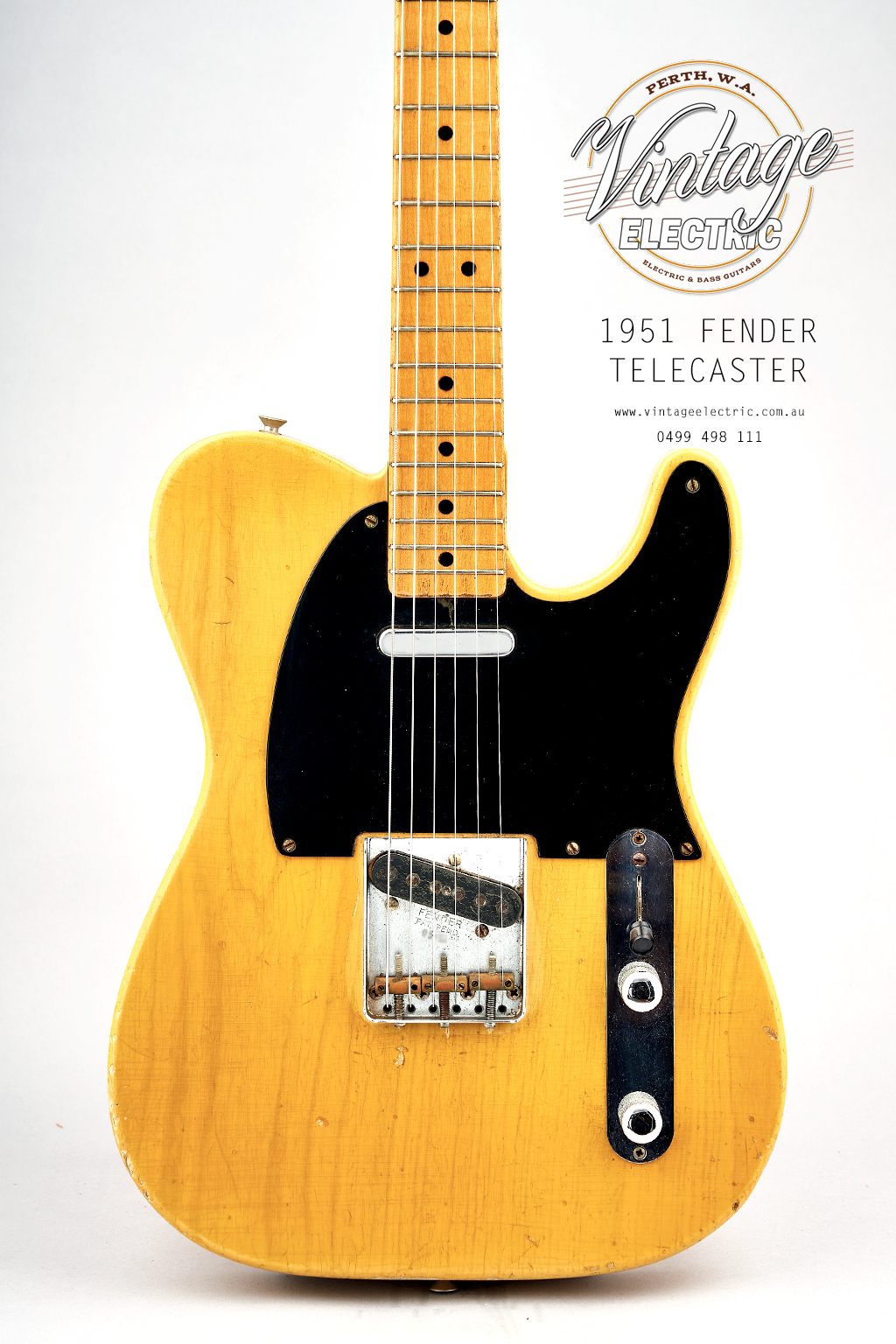
4. Price
The Fender Telecaster and Esquire sold for around US$179 and $139 respectively in 1951. In 1952-53, this price would increase by $10.

Figure 5 – 1952 Fender Price List
For the next two decades, they were regularly sold at second hand guitar stores and pawn shops for around $50-100 advertised simply as ‘used guitars’.
Today, the majority of original 1951 Fender Telecasters command price tags in excess of USD $100,000.
5. Useful Links
More information is available below:
6. References:
Some of the information above, particularly that of the production numbers was compiled from the following book:
Baños, Nacho (2005). The Blackguard : A Detailed History of the Early Fender Telecaster Years 1950-1954. ISBN 9788460966333.
(1-pp 126,2-pp 129)
